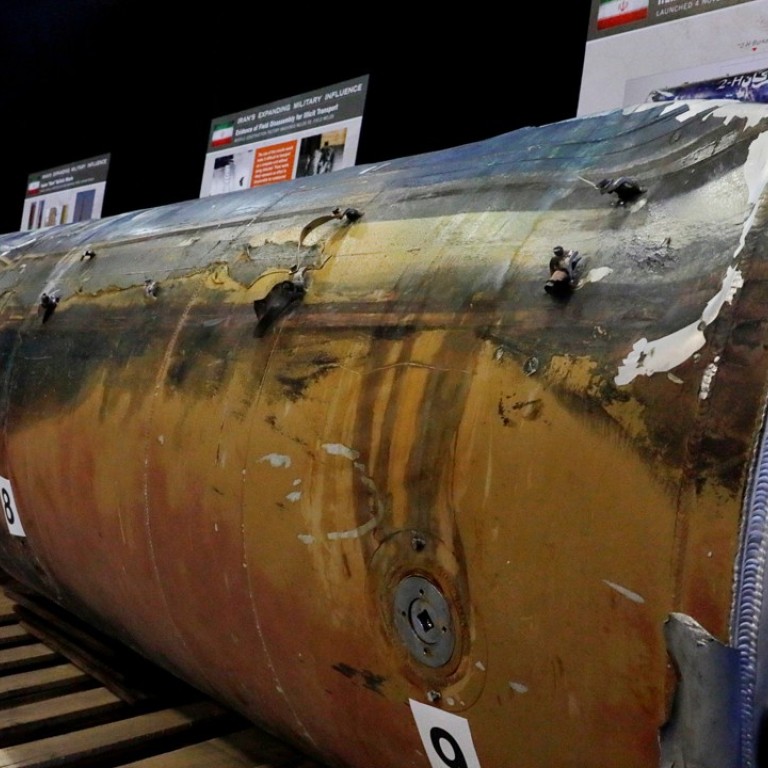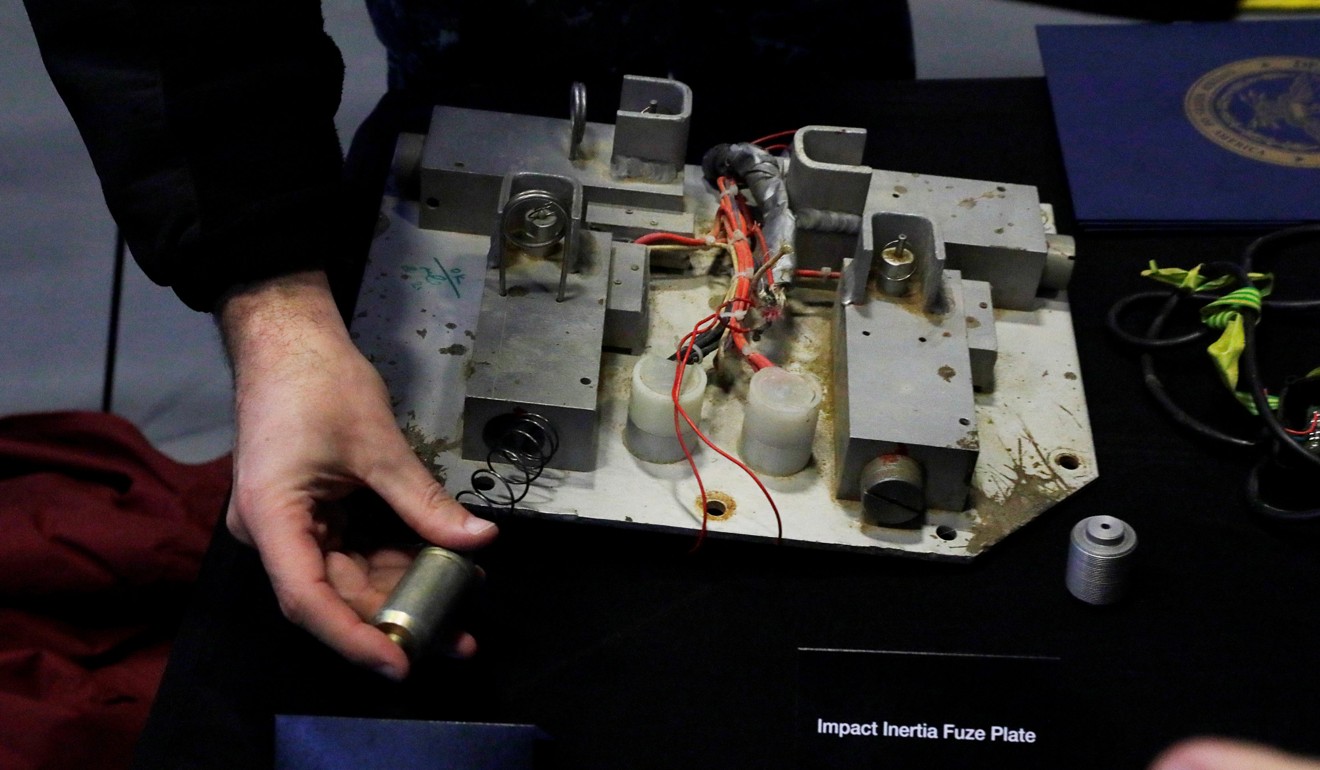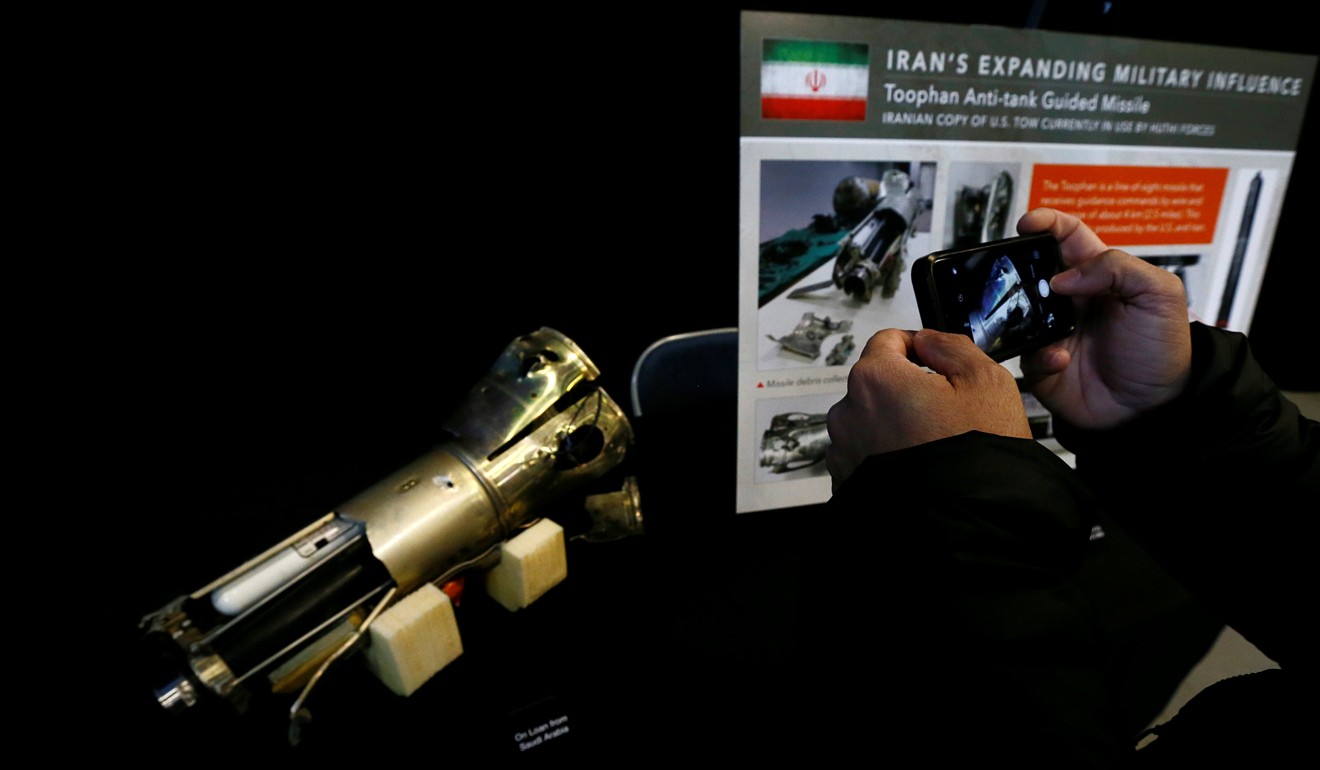
Analysis | ‘Made in Iran’: US displays weapon fragments it says prove Tehran is arming Yemen rebels
Iran says the claims recall false evidence used by the US to justify its war in Iraq
The Trump administration wants to use what it describes as evidence of Iran’s deepening military involvement in Yemen’s civil war to secure a new international consensus for harsher action against Tehran, part of a plan to isolate its chief adversary in the Middle East.
US officials have seized on a series of missile strikes by a Yemeni rebel group against Saudi Arabia as an opportunity to intensify global pressure on Iran.
At an elaborately staged presentation at a Washington military base, Nikki Haley, the US ambassador to the United Nations, on Thursday showcased weaponry that she said constituted “undeniable” proof that Iran had expanded its support for Houthi rebels in Yemen as it continues to back armed groups in Lebanon, Syria and other countries.
“This evidence demonstrates a pattern of behaviour in which Iran sows conflict and extremism,” Haley said, flanked by an array of mangled missile parts, a broken-up drone and other weaponry recovered by Persian Gulf allies of the United States.
The rare decision to publicly present material exploited by intelligence analysts underscores the Trump administration’s determination to galvanise new international action against Iran even as President Donald Trump threatens to abandon the 2015 nuclear agreement negotiated by his predecessor and other world powers.

The focus of Haley’s presentation were remnants of what officials say are two ballistic missiles manufactured in Iran, smuggled into Yemen and used by Houthi fighters to launch a series of attacks this year on targets deep within Saudi Arabia, including one of the country’s busiest civilian airports.
US officials pointed to design features and markings – described as being from government-run defence firms – that indicate the missiles are Iranian Qiam short-range ballistic missiles.
“The weapons might as well have had ‘Made in Iran’ stickers all over” them, Haley said, accusing Iran of violating UN Security Council resolutions.
The Iranian government has denied the allegations. In a message on Twitter, Iranian Foreign Minister Mohammad Javad Zarif compared Haley’s presentation to former secretary of state Colin Powell’s 2003 allegations about Iraqi weapons of mass destruction, which were later found to be false.
“When I was based at the UN, I saw this show and what it begat,” he said.
While administration officials have already privately briefed allied officials on the new information, it is unclear whether it will be enough to sway European and other US allies that continue to back the nuclear deal and may be reluctant to embrace new punishments against Tehran.
Jarrett Blanc, who served as a senior official on the Iran deal under the Obama administration, said European countries did not share the United States’ “pathological fear” of Iran but are worried about Iran’s military support for groups such as the Shiite Houthis in Yemen.

“The question is, what do the Europeans need in terms of confidence that the United States is not going to blow up the [Iran deal] to do something on ballistic missiles?” he said.
The public affairs blitz in Washington came as a punishing three-year-old civil war continues in Yemen. The conflict, which began in 2014 when Houthis seized control of Sanaa, the country’s capital, and drove the government of president Abdu Rabbu Mansour Hadi from power, has killed thousands and triggered a major humanitarian crisis.
The United States has provided military support to Saudi Arabia, which leads a coalition of Arab states that entered the war in March 2015 to beat back what Saudi Arabia said is an Iranian proxy force. While analysts said at the outset of the conflict that the Saudi claims were exaggerated, most agree the war has driven Shiite Iran and the Houthis toward greater cooperation.
“Most people agree at this point that the Saudis are facing a legitimate security threat and that Iran is part of the problem,” said April Alley, a Yemen researcher at the International Crisis Group.
“Critics would say that by continuing down this road, things will just get worse,” Alley said. The Houthi missile offensive – and its potential to spark retaliation by the Saudis or their allies – “raises the spectre of escalation in other locations in the region,” she said.

Haley’s message underscored Trump’s largely unwavering support for Saudi Arabia since his election. But the White House has also chided the kingdom in recent weeks for its handling of Yemen’s humanitarian situation, calling on Riyadh to do more to allow aid and other supplies to reach desperate Yemenis.
The military items showcased on Thursday also included what officials said was an Iranian-produced drone that could be used for “kamikaze” purposes, equipment from an attack speedboat and remnants of an anti-tank missile. One piece of computer equipment had been mined to extract photos that officials said were taken at a facility of the Iranian Revolutionary Guard Corps.
The officials said the items were handed over by the Saudi and UAE governments and that there was no doubt about its provenance.
Haley declined to give specifics about what actions the United States would ask allies to take against Iran at the United Nations or elsewhere. The administration might also seek to use the display to increase support among congressional Republicans for taking steps that could ultimately lead to the scuttling of the nuclear deal.
In October, Trump withheld certification of the nuclear agreement but did not pull the United States out of it entirely. The next certification deadline is in January.

